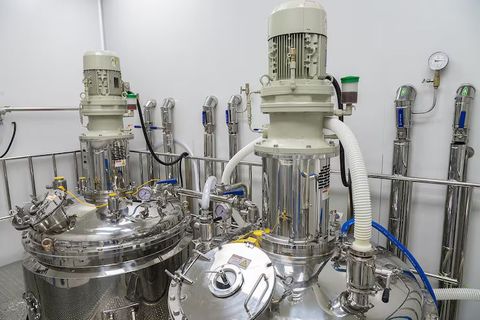Understanding UART Communication: Explore Core Concepts, Tips, and Helpful Resources
Universal Asynchronous Receiver-Transmitter, commonly known as UART, is a fundamental communication method used to transfer data between electronic devices. It was developed to enable simple, direct, and dependable data exchange without requiring a complex clock-synchronized interface. UART operates by converting parallel data from a processor into serial form for transmission and then converting incoming serial data back to parallel form at the receiving end.
UART communication became widely used because early computing systems needed a reliable way to connect peripherals such as modems, sensors, and microcontrollers. Even as technology advanced, UART remained relevant due to its simplicity, low hardware requirements, and compatibility with embedded systems.
A UART interface typically includes a transmitter and receiver, each managing start bits, data bits, parity bits, and stop bits. This structure allows devices to communicate asynchronously—each device operates on its own clock, eliminating the need for a shared timing signal. Because of these characteristics, UART is still found in microcontrollers, industrial automation systems, robotics, consumer electronics, and diagnostic tools.
Importance
The relevance of UART communication continues across various fields due to its ease of use and dependability. Engineers, developers, and system integrators rely on UART when designing embedded systems that require stable and predictable data transfer.
UART matters because it solves several critical problems:
-
Reliable device-to-device communication
It allows microcontrollers, sensors, and modules to transfer data cleanly even in low-power or resource-limited environments. -
Low hardware complexity
Unlike more advanced protocols, UART only requires two main data lines—TX and RX—which reduces wiring needs. -
Widespread compatibility
It is supported by most microcontrollers, development boards, and integrated circuits. -
Ideal for diagnostics and debugging
Developers frequently use UART for logging system behavior, testing firmware, and troubleshooting embedded applications. -
Predictable data formatting
The structure of start bits, parity bits, and stop bits ensures data integrity in a wide range of use cases.
Today, UART communication affects industries such as manufacturing, automotive electronics, smart devices, renewable energy systems, home automation, aerospace testing, and research-based instrumentation. Its importance persists because it offers a stable and well-understood foundation for serial communication.
Recent Updates
Although UART technology is decades old, several meaningful developments have occurred in the past year that influence how it is used in modern applications.
In 2024, embedded hardware manufacturers introduced enhanced UART modules with better noise resistance and support for higher baud rates in compact microcontrollers. These improvements were made to support the increasing demand for reliable data transfer in Internet of Things (IoT) environments.
In January 2024, microcontroller platforms such as STM32 and ESP32 updated their firmware libraries, adding advanced UART debugging features and improved buffer management systems. These updates help developers handle larger data bursts more efficiently.
In mid-2024, hardware testing tools adopted updated waveform analysis functions for UART, allowing engineers to visualize parity, stop bits, and baud-rate accuracy more clearly during development.
Towards the end of 2024, several educational and engineering communities released updated documentation and learning materials focusing on UART’s role in mixed-protocol environments, including systems that combine UART with I2C, SPI, or CAN interfaces.
These updates show that even though UART is an older communication protocol, it is continuously improved to support modern embedded design and better data integrity.
Laws or Policies
Rules and policies that affect UART communication generally relate to electronic device standards, electromagnetic compatibility, and hardware communication guidelines. While UART itself is a technical protocol, its implementation must follow safety and compliance rules depending on the region or industry.
Some key regulatory areas include:
-
Electromagnetic Interference (EMI) Standards
Devices using UART must comply with EMC guidelines such as CISPR, IEC, and local regulatory norms. These ensure that UART signals do not cause interference with nearby equipment. -
Industrial Equipment Standards
Sectors such as automation and manufacturing follow standards like IEC 61000 for electrical safety and noise immunity. UART-based systems in industrial controllers need to meet these regulations. -
Consumer Electronics Guidelines
Products containing UART-controlled components must comply with general electronic device regulations defined by national bodies. -
Automotive Electronics Requirements
When UART is used in vehicle electronics, it must align with automotive standards that ensure reliability in harsh environments, including vibration, temperature changes, and electrical noise. -
Communication and I/O Compliance
Some regions set communication interface guidelines to ensure consistent electrical characteristics for serial ports. While these guidelines do not modify UART itself, they specify how devices must handle signal levels and connectivity.
Overall, these rules ensure safe operation, reduce interference, and maintain uniformity in electronic systems that rely on UART communication.
Tools and Resources
Numerous helpful tools exist to support learning, testing, and implementing UART communication. These tools provide insights into data timing, signal integrity, debugging, and software configuration.
Hardware Tools
-
Logic analyzers for capturing and decoding UART signals
-
Oscilloscopes to analyze waveforms and verify timing
-
USB-to-UART adapters for connecting laptops to microcontroller serial terminals
-
Development boards such as Arduino, STM32, ESP32, and Raspberry Pi
Software Tools
-
Serial terminal applications
-
PuTTY
-
Tera Term
-
CoolTerm
-
Minicom
-
-
Embedded development environments
-
STM32CubeIDE
-
Arduino IDE
-
Espressif IDF
-
MPLAB X IDE
-
Learning Resources
-
Official microcontroller documentation
-
Technical reference manuals
-
Engineering forums and educational platforms
-
Serial communication analyzers with UART decoding
-
Baud-rate calculators for configuring transmission speeds
These tools make it easier to experiment with UART, design reliable communication setups, and troubleshoot issues during development.
FAQs
What is the main purpose of UART communication?
UART is designed to enable asynchronous serial data exchange between devices. It converts data into a format that can be transmitted over simple wiring and then reconstructs the data on the receiving side.
How does UART differ from SPI and I2C?
UART uses two communication lines and operates asynchronously, while SPI and I2C use clock signals to synchronize data transfer. SPI is faster and supports multiple devices easily, while I2C supports addressing but at lower speeds. UART is simpler and widely used in low-complexity communication.
What is a baud rate?
A baud rate refers to the number of signal changes or symbols transmitted per second. In UART communication, baud rate determines how quickly data is sent from one device to another.
Why do parity bits matter?
Parity bits are used for basic error detection. They help ensure that data is not corrupted during transmission by indicating whether the number of 1s in the data byte is even or odd.
Can UART support long-distance communication?
Standard UART is designed for short distances due to signal integrity limitations. However, with special drivers such as RS-485 converters, the range can be extended for industrial applications.
Conclusion
UART communication remains a core part of modern electronics because it offers clarity, simplicity, and stability in data transfer. Even with the rise of faster and more complex communication protocols, UART continues to be widely adopted due to its consistent performance and minimal hardware requirements. It supports embedded systems, industrial automation, diagnostics, and IoT devices, making it a reliable interface across many sectors.






